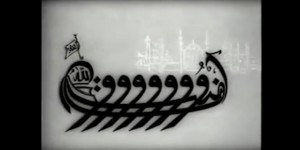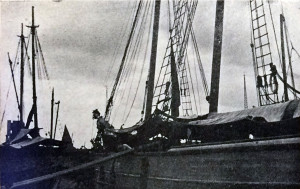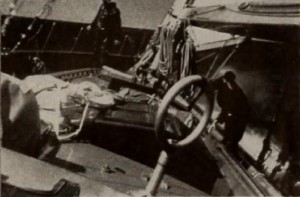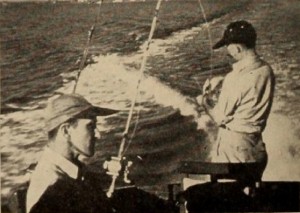
“The question ‘How was the mentü ship Steered’ bears two meanings: as inference in the sense of ‘faith,’ as well as the relation between the notions of ‘imagery, logos, and action.’ The answer is ‘divine love,’ regardless of the form of the question: the Amentü ship is navigated by the love of God. ” Zeynep Gemuhluoglu, tsa.org: https://www.tsa.org.tr/en/yazi/yazidetay/67/%EF%BF%BD%EF%BF%BDmentu-gemisi-nasil-yurudu (16 Oct 2019).
"Carl Weagant's sea epic, The Cruise Of The Carlsark, 3000 ft., 16mm., is a complete film record of the voyage of the ketch, Carlsark, across the Atlantic. Three Cornell men began the adventurous trip at Ithaca, N. Y., sailing through the Erie Canal system into the St. Lawrence and thence out into the Atlantic. Crossing the ocean in the little yawl, they cruised through the Mediterranean and returned home, stopping at the Canaries. The film record of the trip, made by Mr. Weagant, who was skipper as well as cameraman, is almost as important an advent in the annals of amateur movie making as the trip itself is in yachting circles. Excellent in exposure throughout, the picture contains few of the errors that would have been excusable. The continuity follows the chart of the voyage but the reels of sea scenes in the midst of the film can be considered as a separate subject. These scenes, telling the every day life aboard the ketch and the exciting incidents on the trip, are as interesting and as well photographed as any amateur made sea pictures that have come to the attention of League headquarters." Movie Makers, Dec. 1930, 759.

"doc. a fantasia"/avant-garde documentary
"Racing Stars tells the story of a contest of boating enthusiasts in the Star class of sail boats. The Star is used primarily for racing, is about 23 feet long, has a keel with a 900 pound weight at the bottom, and carries only two sails, a main and a jib. Standards assure similarity of boats, of which there are about 5000 in all parts of the world. An animated diagram shows how Star boats follow the prescribed course in a contest An excellent commentary with superb photography keeps this picture moving with never a let-up, and any landlubber can smell the sea air by the time the picture ends" PSA Journal, Sept. 1964, 50.

"Lovers of boats and devotees of movie making alike will probably never see enough of Rochester Race, produced by Walter F. Chappelle jr. in the summer of 1952. For this picture is one of the most complete and authentic records of big-league yacht racing that has been produced to date. For big league indeed was the 72 foot yawl Escapade, owned by Wendell Anderson of the Detroit Yacht Club and sailing as scratch boat in the Rochester point-to-point race westward to Hamilton, Ont., eastward to Stony Point Light, and then back to the Rochester inlet. And big league too was Mr. Chappelle's detailed coverage of this grind, as the proud beauty — with a crew of fourteen and 2630 square feet of working sail area — barreled through heavy seas, slatted and drifted in the calms — but came home by 38 seconds the winner. Working under difficult (and often dangerous) conditions, the producer nevertheless achieved a variety and quality of scenes which are amazing. His handling of side or back lighting, as a big Genoa or spinnaker jib arched out from the Escapade, creates many moments of breath-taking beauty. With Rochester Race Mr. Chappelle has proved beyond the cavil of superstitious yachtsmen that a fine movie may be made on a fine racing craft — and yet still win the race." Movie Makers, Dec. 1953, 332-333.

"Al Schmidt's Sail Fishing is a well edited and engagingly pleasant presentation of a theme that might easily get out of hand. Mr. Schmidt has covered all aspects of an exciting sport, including the rarely mentioned sharks. However, the greatest virtue of Sail Fishing is not the film itself but the accompanying narrative, which is delivered calmly and with a good deal of humor. Mr. Schmidt has proved that sharks are exciting in their own right, instead of as a backdrop for a babbling and frenetic narrator." Movie Makers, Dec. 1949, 471.
Total Pages: 2